Exploration of the Planets in the Solar System

Mars Perseverance rover (NASA)

Mars Perseverance rover (NASA)
How does this align with my curriculum?
Learn about how spacecraft have helped us learn about our Solar System.
Before 1950, all we knew about the Solar System was from telescopes used on land. That all changed in 1959 with the launch of the first spacecraft to fly by the Moon. Only two years later, the first human went into space and orbited around the Earth. This was the beginning of an era of human space travel. We have since launched many spacecraft to explore our Solar System.
Human Exploration – The Apollo Program and the Moon
The goal of the Apollo program was to land humans on the Moon and bring them safely back to Earth. The program ran from 1963 to 1972. It landed six manned spacecraft on the surface of the Moon. In 1969, Neil Armstrong became the first of 12 astronauts to walk on the Moon’s surface.
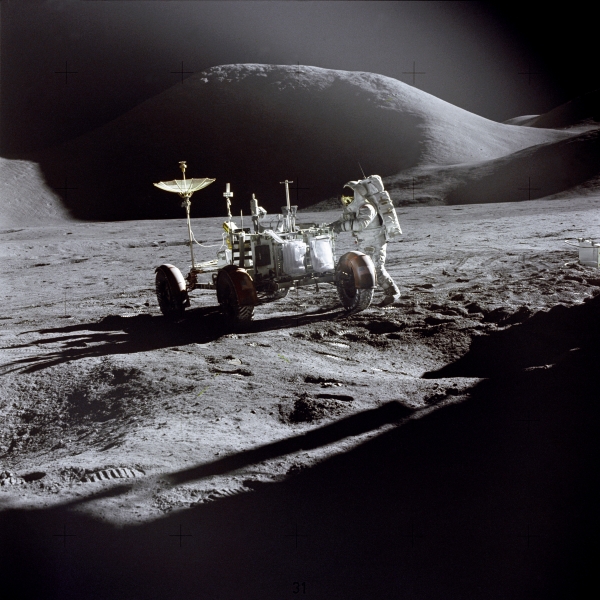
The Apollo program confirmed that humans could live and work in space. The Apollo astronauts did a lot of science while they were there. They set up equipment to detect ‘moonquakes’. They collected samples and data to learn about the composition of the Moon. They also set up a laser retroreflector which is used to precisely measure how far away the Moon is from the Earth.
Did you know?
The Apollo program brought over 300 kg of lunar rocks and soil back to Earth.
Humans have not set foot on another body in our Solar System since the Apollo program ended. But plans are in motion for sending humans to the Moon by 2024. The Artemis Lunar Exploration Program includes the setup of the Lunar Gateway. This will be a space station orbiting around the Moon. This gateway will help Moon exploration and also provide a base for the launch of spaceships to Mars. The Canadian Space Agency is participating with its robotics expertise, including the Canadarm3.
But many challenges must be overcome before humans can reach Mars. Humans can make a trip to the Moon and back in about a week. But travelling to Mars would take over 8 months! This is one reason why scientist astronauts on the International Space Station are studying how we can adapt to living in space. Such studies will help to make sure that humans can survive in the Martian Environment.
Venus and Mercury
A few spacecraft have visited our closest neighbour, Venus. Humans once thought of Venus as Earth's twin as it had a similar size. But that changed when we visited it. In 1962, Venera I was the first spacecraft to fly by any planet. In 1962, Mariner 2 was the first spacecraft to send back data. In 1978, Pioneer 2 sent smaller probes to Venus’s surface. Amazingly, two probes survived the landing and sent data back. We now know that Venus has surface temperature around 475 degrees Celsius!
Did you know?
Mariner 2, one of the first successful space missions, weighed 203 kg (447 pounds). In comparison, the latest telescope to be sent, the James Webb telescope weighs 6 350 kg (14 000 pounds).
The Magellan spacecraft (1989-1994) orbited Venus for four years. It returned images of an inhospitable planet with violent winds. It also discovered that 85% of the surface was covered with lava. We lost Magellan in 1994, 10 hours after it entered Venus’ atmosphere. The atmospheric pressure, which is about 92 times that of Earth, probably crushed it.
Mariner 10 (1973-1975) was the first Mission sent to the Sun’s closest planet, Mercury. It was also the first mission to test the theory of a gravity assist. This is a traveling technique that consists of using a planet’s gravity to “slingshot” itself.
The Messenger spacecraft (2004-2015) orbited Mercury for four years. It gathered data on the geology, magnetism and chemical composition of the planet. Finally, the BepiColombo spacecraft launched in 2018. It is expected to reach Mercury in 2025. It will allow us to understand Mercury even more.
Landing on Another World - Mars Exploration Rovers
Humans are fascinated by Mars. This is because it is the Solar System’s only other planet where we could possibly set up a base. NASA has had more than 20 missions to Mars. And although humans haven’t set foot on Mars yet, many rovers have. The first lander was the Viking I in 1972.

Spirit and Opportunity are the names of the twin Mars Exploration Rovers that landed in 2004. Their mission was to look for evidence that Mars once had liquid water on its surface. If Mars had water then it is possible that it could have once supported life.
The Mars rovers were designed to be on-site robotic geologists. They came with scientific instruments to study the surrounding rocks and soil.
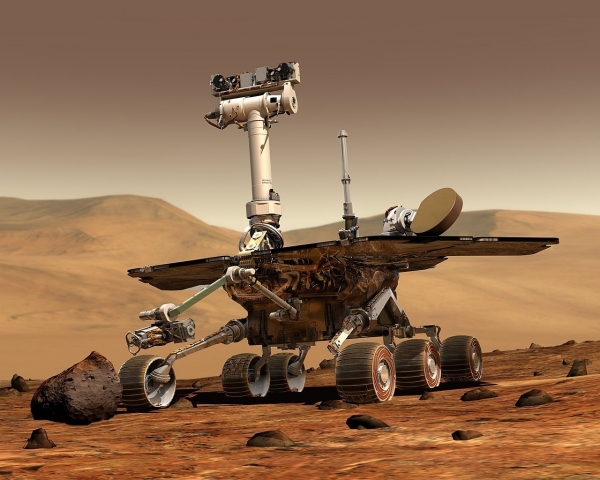
Their panoramic cameras took high-resolution 360o views of the landscape. They also had a robotic arm, which acted much like a human arm, reaching out to grab rocks and soil samples to analyze.
Both rovers found strong evidence that water used to exist on Mars. After five years of exploring, Spirit became stuck in soft soil, It stopped communicating with Earth 10 months later. Opportunity’s last transmission was in June 2018, when it got lost in a huge dust storm.
The Mars Science Lab Mission brought a new rover to Mars, named Curiosity. It is four times heavier than the previous rovers. This required a new landing system, using a parachute. Its mission is to continue the search for evidence that Mars was once able to support life. It has all the instruments needed to search for water, energy and carbon. Those are the 3 necessities for life as we know it on Earth. It also has a fancy robotic arm for drilling into rocks and collecting soil samples.

In the summer of 2020, the Perseverance rover launched and is planned to land on Mars in 2021. The European Space Agency and Russia’s space agency, Roscosmos are also collaborating to send the Rosalind Franklin rover to Mars in 2022.
Probing the Outer Solar System
The table below shows the past, present and future missions to learn more about the Solar System past Mars.
|
Mission to the Outer Solar System |
Objective |
Date |
|---|---|---|
|
Jupiter |
(1972-2003) |
|
|
Jupiter and Saturn |
(1972-2003) |
|
|
Jupiter and Saturn |
(1977- |
|
|
Jupiter, Saturn, Uranus and Neptune |
(1977- |
|
|
Jupiter's moons |
(1989-2003) |
|
|
Saturn |
(1997-2017) |
|
|
Dwarf planet Pluto and the Kuiper Belt |
(2006- |
|
|
Jupiter's moons |
(2011- |
|
|
Ganymede (Jupiter) |
2022 |
|
|
Europa (Jupiter) |
2024 |
|
|
Titan (Jupiter) |
2027 |
The current mission to Jupiter is called Juno. It arrived at Jupiter in 2016. Juno beat the record for the furthest spacecraft from the Sun to run on solar power. Juno has allowed many discoveries to better understand the king of planets.
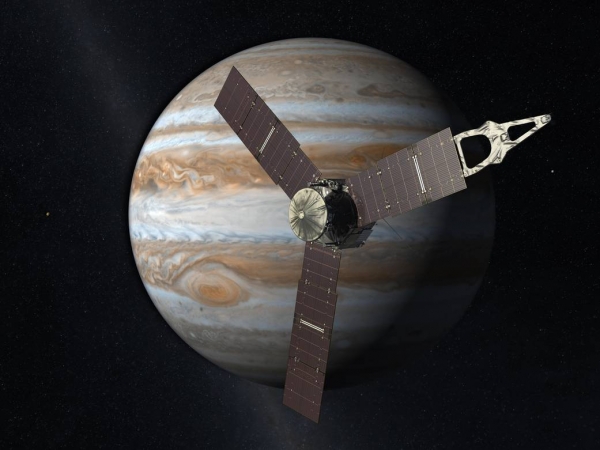
It allowed a first look at Jupiter’s poles and the giant cyclones that rage there. It provided scientists more details on the chemical composition of the gassy planet. It also studied Jupiter’s magnetic field which proved to be much more complex than the one on Earth. But most interesting was receiving video of activity on this stormy planet. You can see it with this video of the Great Red Spot in motion.
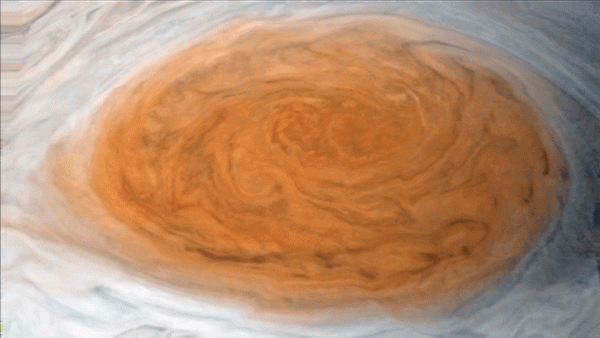
After a flyby of Jupiter, the Cassini probe arrived at Saturn in 2004. It was the first spacecraft to orbit the ringed planet. Cassini’s mission was to study the atmosphere and rings of Saturn and also to take a closer look at some of its moons. Cassini made an exciting discovery on the icy moon Enceladus. It took photos showing icy plumes, or geysers, shooting off the surface.
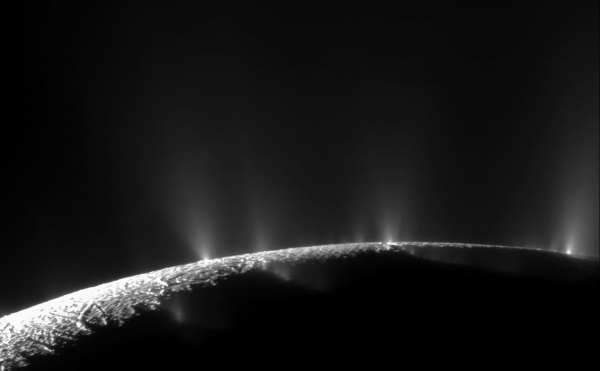
Cassini carried with it the Huygens probe which landed on one of Saturn’s moons, Titan. The Huygens probe was the first spacecraft to land on a body in the outer Solar System. Titan is Saturn’s largest moon. It is very interesting because it is the most Earth-like body in our Solar System. It has a thick atmosphere and resembles what Earth may have looked like billions of years ago. The Huygens probe revealed that Titan has rivers and lakes on its surface. But instead of liquid water, they are filled with liquid ethane and methane. These are carbon-based compounds that are also found on Earth in natural gas.
As Cassini was running out of fuel, scientists decided to end the mission. This was to make sure it would not contaminate any of Saturn's moons. This was important as the moons are great candidates for extraterrestrial life. So for its last few months, Cassini dipped in and out of Saturn's rings. And it ended by crashing into Saturn and burning up in the atmosphere.
The Voyager Missions
Voyager I and Voyager II had planets as their initial goal. But they were not programmed to orbit the planets. Instead, they have done fly-bys of the planets and have kept drifting away from us ever since. In 2012, Voyager I became the first spacecraft to ever reach interstellar space. Interstellar space is what is outside our Sun and other stars’ influence. Voyager II reached it in 2018.
Voyager II was the first spacecraft to fly by Neptune and Uranus. Since then, only the Hubble Space telescope was also able to photograph these planets. The data Voyager II sent back to scientists helped us better understand those two ice giants.
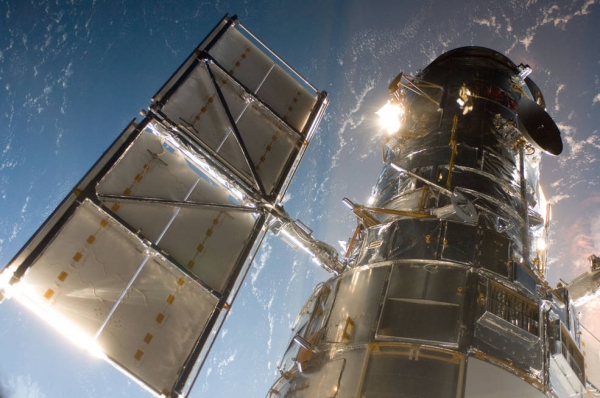
Did you know?
Pioneer 10, Pioneer 11, Voyager 1 and Voyager 2 each carry a message from humanity to possible life they may encounter on their travels.
The twin spacecraft have been in space more than 40 years. They are billions of miles from Earth. To go into deep space, they run on nuclear power, rather than solar power. As of 2020, both spacecraft are still sending data back to Earth. But sadly, both spacecraft will eventually run out of power. Scientists estimate this will probably happen before 2030.
The Future
Compared to the age of human existence, space exploration is quite a young adventure. We still have lots to learn and explore. Technological progress in robotics and artificial intelligence will allow us to reach further. We will also obtain better data with each new spacecraft we send. Sending man into space also brings new promises into how we can learn about the Solar System’s planets. If you are a student as you are reading this, you might even be able to travel to Mars in your lifetime!
Learn More
Learn more about our solar system with this interactive exploration from NASA.
Learn more about the different types of tools researchers use to explore space from the Smithsonian National Air and Space Museum.
Learn more about the Mars Rovers in this article from NASA Space Place.
Explore planets, moons, and asteroids through this app from NASA.
References
NASA (n.d.) Missions. Solar System Exploration.
NASA (n.d.) Mars Exploration Program.
NASA (n.d.) Science Missions.